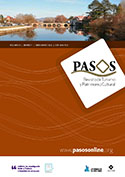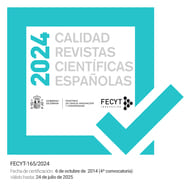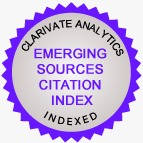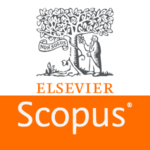Motivation for traveling and tourist satisfaction in function of personality factors
DOI:
https://doi.org/10.25145/j.pasos.2022.20.002Keywords:
Tourism, Personality , Motivation , Satisfaction , Opening to experienceAbstract
Free time is growing and tourism is a way to spend it as leisure, which has various implications, some of which are purely psychosocial. Therefore, the tourism activity is a psychosocial phenomenon that is worth to study. The goal of the present work is to subject is to study the relationship between tourists personality, motivation and tourist satisfaction, as well as differences according to sex, age, and educational level in the aforementioned variables. The sample is made of 239 participants aged betweed 12 and 82 years (X = 33, DT = 15.6) who have completed the NEO-FFI Personality Inventory, together with the Visibility Motivation Scales and Tourist satisfaction. They have also indicated their priorities according to Pearce's tourism motivation model. Based on the results, it have been found relationships between some personality profiles, different motivations and tourist satisfaction. However, it were not found statiscally significant differences according to the level of studies class in tourism motivations, as well as no inter-gender differences in motivation or tourist satisfaction. It woud be interesting as a future prospect promote research in this field that links personality and tourist hebavior, according to its importance at the psychosocial level.
Downloads
Publication Facts
Reviewer profiles N/A
Author statements
- Academic society
- PASOS. Revista de Turismo y Patrimonio Cultural
- Publisher
- Instituto Universitario de Investigación Social y Turismo. Universidad de La Laguna (España) - Instituto Universitario da Maia ISMAI (Portugal)
References
Abbate, C. S., & Nuovo, S. D. (2013). Motivation and personality traits for choosing religious tourism. A research on the case of Medjugorje. Current Issues in Tourism, 16(5), 501-506. doi: 10.1080/13683500.2012.749844
Ariffin, A. A. M., Ahmad, A. H., & Ishak, N. K. (2008). Corporate Meeting Destination Choice: The Influences of Consumption Value, Organizational Structure and Personality. International. Journal of Hospitality & Tourism Administration, 9(4), 313-326. doi: 10.1080/15256480802427248
Andrade, M. (2012). Los factores personales como variables determinantes en la formación de la imagen del destino. Especial referencia a las motivaciones turísticas. Teoría y Praxis, (11), 10-39.
Bigné, J. E., Sánchez, M. I., & Sánchez, J. (2001). Tourism image, evaluation variables and after purchase dimensions. Tourism Management, 22, 127-133. doi: 10.1016/S0261-5177(01)00035-8
Borges, S., & De Sevihla, M. (2019). Motivación hedónica, motivación eudaimónica y apego al lugar. Un estudio en el Festival Cultura y Gastronomía de Tirandentes, Brasil. Estudios y Perspectivas en Turismo, 28, 652-674.
Chi, C.G.Q., & Qu, H. (2008). Examining the structural relationships of destination image, tourist satisfaction and destination loyalty: An integrated approach. Tourism Management, 29, 624-636. doi: 10.1016/j.tourman.2007.06.007
Chon, K. S. (1992). Self-image/destination image congruity. Annals of Tourism Research, 19(2), 360-363. doi: 10.1016/0160-7383(92)90090-C
Colvin, M., & Rutland, F. (2008). Is Maslow's Hierarchy of Needs a Valid Model of Motivation. Louisiana Tech University. Recuperado de http://www.business.latech.edu/
Costa, P. T., & McCrae, R. R. (1980). Still stable after all these years: Personality as a key to some issues in adulthood and old age. Life Span Development and Behavior, 3, 65-102
Costa, P. T., & McCrae, R. R. (1992). The Revised NEO Personality Inventory (NEO – PI – R) and NEO Five – Factor – Inventory (NEO – FII) professional manual. Odessa, FL: Psychological Assessment Resources.
Crompton, J. L. (1979). Motivations of pleasure vacations. Annals of Tourism Research, 6(4): 408-424.
Devesa, M., & Palacios, A. (2005). Predicciones en el nivel de satisfacción percibida por los turistas a partir de variables motivacionales y de valoración de la visita. Información Comercial Española, 821, 241-255. doi: 10.32796/ice.2005.821.768
Devesa, M., Laguna, M. & Palacios, A. (2008). Un modelo estructural sobre la influencia de las motivaciones de ocio en la satisfacción de la visita turística. Revista de Psicología del Trabajo y de las Organizaciones, 24(2), 253-268.
Devesa, M., Laguna, M., & Palacios, A. (2010a). The role of motivation in visitor satisfaction: Empirical evidence in rural tourism. Tourism Management, 31, 547-552. doi: 10.1016/j.tourman.2009.06.006
Devesa, M., Laguna, M., & Palacios, A. (2010b). Motivación, satisfacción y lealtad en el turismo: el caso de un destino de interior. Revista Electrónica de Motivación y Emoción. Monográfico de la Motivación del Consumidor XIII (35 y 36), 169-190.
Digman, J. M., & Takemoto-Chock, N. K. (1981). Factors in the natural language of personality: Re-analysis, comparison, and interpretation of six major studies. Multivariate Behavioral Research, 16(2), 149–170. doi: 10.1207/ s15327906mbr1602_2
Dumazedier, J. (1974). Sociologie empirique du loisir. Critique et contracritique de la civilisation du loisir. Paris: Du Seuil.
Garcés, S., Pocinho, M., Neves, S., & Rieber, M. S. (2018). Positive Psychology & Tourism. Tourism & Management Studies, 14(3), 41-51.
García, J. S. M. (1997). Psicosociología del ocio y el turismo. Psicothema, 9(3), 689-691.
Goldberg, L. R. (1981). Language and individual differences: The search for universals in personality lexicons. Review of Personality and Social Psychology, 2(1), 141-165.
González, J. (2018). La actividad turística como fenómeno complejo. Una visión Alternativa. Controversias Y Concurrencias Latinoamericanas, 10(16), 111-117. Recuperado a partir de http://sociologia-alas.org/CyCLOJS /index.php/CyC/article/view/58
Gountas, J., & Gountas, S. (2007). Personality orientations, emotional states, customer satisfaction, and intention to repurchase. Journal of Business Research, 60(1), 72-75. doi: 10.1016/j.jbusres.2006.08.007
Graziano, W. G., & Tobin, R. M. (2009). Agreeableness. En M. R. Leary & R. H. Holey (eds.). Handbook of individual differences in social behavior (pp. 46-61). New York: Guilford.
Gretzel, U., Mitsche, N., Hwang, Y. H., & Fesenmaier, D. R. (2004). Tell me who you are and I will tell you where to go: use of travel personalities in destination recommendation systems. Information Technology & Tourism, 7(1), 3-12.
Kalmus, V., Realo, A., & Siibak, A. (2011). Motives for Internet use and their relationships with personality traits and socio-demographic factors. Trames, 15(4), 385-403. doi: 10.3176/tr.2011.4.04
Kozak, M., & Rimmington, M. (2000). Tourist satisfaction with Mallorca, Spain, as an off-season holiday destination. Journal of Travel Research, 38(3), 260-269. doi: 10.1177/004728750003800308
Laguna, M., & Palacios, A. (2009). La calidad percibida como determinante de tipologías de clientes y su relación con la satisfacción: Aplicación a los servicios hoteleros. Revista Europea de Dirección y Economía de la Empresa, 18(3): 189-212.
Lee, Y. C. (2013). The influence of personality traits, health knowledge, and product attributes on intent to purchase Taiwan’s healthcare tourism products. Social Behavior and Personality, 41(3), 395-410. doi: 10.2224/sbp.2013.41.3.395
Leung, R., & Law, R. (2010). A Review of Personality Research in the Tourism and Hospitality Context. Journal of Travel & Tourism Marketing, 27(5), 439-459. doi: 10.1080/10548408.2010.499058
Lin, Y., Kerstetter, D., Nawijn, J., & Mitas, O. (2014). Changes in emotions and their interactions with personality in a vacation context. Tourism Management, 40, 416-424. doi: 10.1016/j.tourman.2013.07.013
Maslow, A. H. (1943). A theory of human motivation. Psychological Review, 50(4), 370-396. doi: 10.1037/h0054346
McCrae, R. R., & Sutin, A. R. (2009). Openness to Experience. En M. R. Leary and R. H. Hoyle (Eds.) Handbook of individual differences in social behavior (pp. 57-273). New York: Guilford.
Moral, M. V. (2009). Ocio bifronte en una sociedad postindustrial: análisis psicosociológico de las tendencias emergentes. Boletín de Psicología, 96, 47-65.
Moreno, S., Beerli-Palacio, A., & León, J. D. (2012). Entender la imagen de un destino turístico: factores que la integran y la influencia de las motivaciones. Criterio Libre, 10(16), 115-142.
Munné, F. (1980). Psicosociología del tiempo libre: Un enfoque crítico. México: Trillas.
Norman, W. T. (1963). Toward an adequate taxonomy of personality attributes: replicated factors structure in peer nomination personality ratings. Journal of Abnormal and Social Psychology, 66(6), 574–583. doi:10.1037/ h0040291
Ojeda, N. M. (2015). Influencia de la personalidad en el comportamiento del turista: una aplicación empírica en Gran Canaria. Tesis Doctoral: Universidad de Las Palmas de Gran Canaria. Recuperado de https://accedacris.ulpgc.es/bitstream/ 10553/17411/3/0724523_00000_0000.pdf
Olague, J. T.; Flores, C. A. & Garza, J. B. (2017). El efecto de la motivación de viaje sobre la satisfacción del turista a través de las dimensiones de la imagen del destino: El caso del turismo urbano de ocio a Monterrey, México. Investigaciones Turísticas (14), 109-129 http://dx.doi.org/10.14461/INTURI2017.14.06
Oliver, R. L. (1997) Satisfaction: A Behavioural Perspective on the Consumer. Boston: McGraw-Hill.
Organización Mundial del Turismo (1994). Concepts, definitions and classifications for tourism statistis. Madrid: UNWTO
Organización Mundial del Turismo (2018). Panorama OMT del turismo internacional. Madrid: UNWTO. doi: 10.18111/9789284419883
Pazos, A. (2017) La evolución del turismo en España. Trabajo de Fin de Grado. Universidad de Valladolid. Recuperado de https://uvadoc.uva.es/bitstream/handle/10324/24042/TFG- N.634.pdf;jsessionid=AA983520765789809BFAFD7360045682?sequence=1
Pearce, P. L. (1982). Perceived changes in holiday destinations. Annals of Tourism Research, 9(2), 145-164. doi: 10.1177/004728758302200163
Pearce, P. L. (1987). Psychological studies of tourist behaviour and experience. Australian Journal of Psychology, 39(2), 173-182. doi: 10.1080/00049538708259046
Pinillos, J. L. (1990). El turismo como hecho psicológico. Papers de Turisme, (2), 5-13.
Roberts, B. W., Jackson, J. J., Fayard, J. V., Edmonds, G., & Meints, J. (2009). Conscientiousness. En M. Leary & R. Hoyle (Eds.). Handbook of Individual Differences in Social Behavior (pp. 257-273). New York: Guilford Press.
Tupes, E. C., & Christal, R. E. (1961). Recurrent personality factors based on trait ratings. Journal of Personality, 60(2), 225-251. doi:10.1111/j.1467-6494.1992. tb00973.x
Widiger, T. A. (2009). Neuroticism. En M. R. Leary & R. H. Hoyle (Eds.). Handbook of Individual Differences in Social Behavior (pp. 129-146). New York: The Guilford Press.
Wilt, J., & Revelle, W. (2009). Extraversion. En M. Leary & R. Hoyle (Eds). Handbook of individual differences in social behavior (pp. 27-45). New York: Guilford.
Yoon, Y., & Uysal, M. (2005). An examination of the effects of motivation and satisfaction on destination loyalty: a structural model. Tourism Management, 26(1), 45- 56. doi: 10.1016/j.tourman.2003.08.016
Yuksel, A., Yuksel, F., & Bilim, Y. (2010). Destination attachment: Effects on customer satisfaction and cognitive, affective and conative loyalty. Tourism Management, 31(2), 274-284. doi:10.1016/j.tourman.2009.03.007
Zapata, J., & Cavazos, J. (2017). Incidence of variables in the Transfer of Tacit Knowledge of Marketing in the hotel sector of Playa del Carmen, Mexico. PASOS Revista De Turismo Y Patrimonio Cultural, 15(3), 603-617. Recuperado a partir de http://ojsull.webs.ull.es/index.php/Revista/article/view/1273
Downloads
Published
How to Cite
Issue
Section
License
Copyright (c) 2021 María de la Villa Moral Jiménez, María García García

This work is licensed under a Creative Commons Attribution-NonCommercial-NoDerivatives 4.0 International License.
I confirm that the work is original (of my/our authorship), and that it will not be submitted to other journals or publications until the final resolution of the review process in PASOS, RTPC.
I authorize the publication of my work by PASOS, PSTN of free and open access in any of the formats that I deem appropriate, for an indefinite period of time and as a non-remunerated collaboration.
Likewise, the author(s) understands that the published work may be linked or deposited on any server or included in other publications (republication), provided that the new place and/or new edition references the original publication and acknowledges the authorship and copyright ownership of PASOS RTPC publications.
Authors understand that a plagiarism-self-plagiarism check will be performed, and the article may be removed at any time from the editorial flow.










